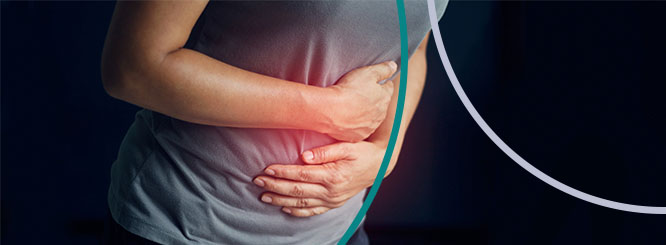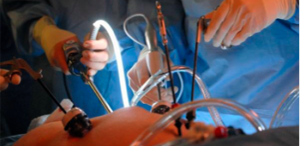
Laparoscopic surgery is a minimally invasive type of surgery that allows doctors to perform operations using very small incisions. Laparoscopes, or small cameras, are threaded through the incisions to display video of the internal abdomen on a monitor, allowing the doctor to perform surgery without leaving a large scar (which traditional surgery leaves).
Many doctors opt for laparoscopic surgery because it helps diagnose a wide range of conditions that develop inside the abdomen or pelvis. It can also be used to carry out surgical procedures, such as removing a damaged or diseased organ or removing a tissue sample for further testing (biopsy)[1].
Compared to traditional open surgeries, laparoscopic surgery results in less trauma to the treated area. As a result, patients can recover from surgery much faster and with a lower risk of side effects. At LIMARP® International Center of Excellence for Obesity, located in Tijuana Mx, Dr. Liza María Pompa González can perform a number of bariatric procedures by way of advanced laparoscopic techniques to minimize your risks and to lay the groundwork for successful treatment and fast recovery.
Laparoscopic Surgery vs. Traditional Surgery
In order for the doctor to see and maneuver freely during the surgery, traditional surgeries require large incisions. In the case of bariatric surgery, an incision can be anywhere from three to 12 inches long. A laparoscopic bariatric procedure, in contrast, requires several incisions of less than half an inch.
The laparoscope and surgical instruments are inserted through these small incisions and the surgeon uses them assisted by a special monitor. Because these surgeries are more technically challenging, they require additional skills and training.
Why is Carbon Dioxide (CO2) Used in a Laparoscopic Bariatric Procedure?
The process for laparoscopy surgery starts like all of our bariatric surgeries: our anesthesiologist will first administer the general anesthesia best suited to your case, ensuring that you remain comfortable throughout your treatment.
Once you are under anesthesia, Dr. Pompa will:
- Create tiny incisions between ¼ and ½ inch long.
- Thread narrow tube-like instruments called cannulas through the incision.
- Expand your abdomen using carbon dioxide (CO2) gas to create work space and improve visibility. A tube is inserted through the incision, and carbon dioxide gas is pumped through the tube to inflate your tummy (abdomen).
- Insert the laparoscopic tools through the cannulas.
- Perform the procedure using a magnified view of the stomach and internal organs.
- Remove the CO2 gas.
- Close the incisions.
With these advanced techniques, Dr. Pompa can perform your entire procedure using only three to five small incisions.
Although, as mostly surgeries or medical procedures, the patient must have post-surgery indications from their healthcare provider. Also, during the recovery the patient might experience excessive gas due to the carbon dioxide (CO2) that was inserted to expand the abdomen, but these excess gas symptoms should not be longer than three days[2].
What About Gas Pain After The Laparoscopy Surgery?
During laparoscopic surgery, as we mentioned, the abdomen is inflated with carbon dioxide gas to create a space between the organs so the specialist can perform the surgery with enough space between the organs. This inflation allows the surgeon to have a better view and more room to work. The gas also helps to separate the organs and reduce the risk of accidental damage during the surgery.
The presence of carbon dioxide gas in the abdominal cavity can cause several issues that contribute to gas pain, such as gas irritation, pressure on the nerves, abdominal distention, and/or residual gas[3].
The carbon dioxide gas may irritate the diaphragm (the thin muscular sheet that separates the chest cavity from the abdominal cavity) leading to referred pain in the shoulder or back[4]. The gas can put pressure on surrounding nerves, leading to discomfort or pain.
Another effect due to the laparoscopy surgery is bloating: the abdomen may become distended or bloated due to the presence of the gas, which can cause a feeling of fullness and discomfort. After the surgery, some of the carbon dioxide gas may remain trapped in the abdominal cavity, causing ongoing discomfort until the body absorbs it.
However, the gas pain after this surgery is generally temporary and should subside as your body naturally absorbs the carbon dioxide. It might take a few days for the gas to completely dissipate and during this time the patient must follow the post-surgery indications to help alleviate the discomfort.
Although, if you have concerns about the level of gas pain or if it becomes severe and persistent, it’s essential to communicate with your healthcare provider or schedule an appointment as soon as possible to identify your condition and provide appropriate guidance and support. This gas pain can be fully controlled with prescribed pain medication and it tends to disappear during the first few days after surgery. This type of pain is no reason for concern[5].
How to Reduce Gas Pain After The Laparoscopy Surgery
As we mentioned, gas pain after laparoscopic surgery is a common side effect due to the carbon dioxide used to inflate the abdomen during the procedure. This gas can cause discomfort and bloating, but it usually dissipates on its own within a few days as your body absorbs it.
Although each body and patient has different needs, here are some general tips that may help alleviate the gas and its associated discomfort[6]:
- Walking and exercising: Moving around and walking can aid in the movement of gas through your digestive system and help you pass it more easily. Also, changing positions regularly, such as sitting up, lying down, or gently rocking back and forth, may help relieve gas pain.
- Rethink your diet: “Eating certain foods can cause trapped gas” [7]. Avoiding foods that can cause gas, such as beans, broccoli, cabbage, carbonated beverages, and fried or fatty foods, may help reduce gas formation.
- Chew and eat slowly and avoid using straws: Eating slowly and avoiding straws can reduce the amount of air you swallow, which can contribute to gas buildup.
- Heat compresses: Applying a warm compress or heating pad to your abdomen may help soothe discomfort caused by gas.
- Medications for gas pain: Over-the-counter medications, such as simethicone, may help break down gas bubbles and reduce bloating.
- Follow your doctor’s prescriptions: Always follow your surgeon’s post-operative instructions and take any prescribed medications as directed.
If you experience severe or persistent gas pain, or if you have any concerns after your surgery, (as we discussed) it is imperative to contact your healthcare provider immediately. They can provide personalized advice and address any complications that may arise.
Gas pain after laparoscopic surgery is a common side effect due to the specific technique used during the procedure. Laparoscopic surgery is a minimally invasive surgical technique where small incisions are made in the abdomen, but this surgery can lead the patient to have a particular recovery, no matter the regular symptoms we encourage you to keep in close with your surgeon.
Contact Our Clinic Today
At LIMARP International Center of Excellence for Obesity, located at Tijuana, Mexico, we take your health very seriously. After your laparoscopy surgery, we supervise and monitor the evolution of your recovery at our private hospital rooms and we make sure you progress safely into your new, more healthy life. If you have any doubts or questions about gas pain after laparoscopy surgery or are experiencing any suspicious symptoms after your treatment, please call us immediately. We will intervene and guide you through everything you need to know.
At our clinic, we offer different non-surgical and surgical treatments for obesity in an integral bariatric program with a multidisciplinary approach. At LIMARP your medical intervention for obesity includes psychological and nutritional counseling, as well as the guidance of a fitness expert. We also offer all-inclusive packages for patients traveling from abroad, where we include lodging at our clinic’s luxurious next-door hotel, and transportation from the airport to the hotel and back.
If you’re interested in getting to know more about our clinic and services, or if you’re interested in knowing more about gas pain after laparoscopic surgery, please call our phone number (619) 270 8823 or send us a message through this website or any of our social media pages. Our team of experts will be glad to help.
References
- [1, 3] “Laparoscopy (keyhole surgery)”. https://www.nhs.uk/conditions/laparoscopy/ (Accessed July 23, 2023).
- [2] “Laparoscopy: What to Expect at Home”. https://myhealth.alberta.ca/Health/aftercareinformation/pages/conditions.aspx?hwid=zc2174 (Accessed July 23, 2023).
- [4] “Gas and gas pains”. https://www.mayoclinic.org/diseases-conditions/gas-and-gas-pains/symptoms-causes/syc-20372709#symptoms (Accessed July 23, 2023).
- [5] “Abdominal pain after gastric sleeve surgery”. https://www.limarp.com/en/blog/gastric-sleeve/abdominal-pain-after-gastric-sleeve-surgery/ (Accessed July 23, 2023).
- [6] “How to get rid of trapped gas”. https://www.medicalnewstoday.com/articles/321504 (Accessed July 23, 2023).
- [7] “What is the best medication for gas?” https://www.medicalnewstoday.com/articles/best-medication-for-gas (Accessed July 23, 2023).


